


Summer 2019 Part 3 - Two Weeks in Croatia - Hvar Island / Split / Brac Island
We arrived in Split by bus from Sibenik. The intercity bus stop is directly across the street from the ferry port and we easily found the booth selling Jardolinja line tickets to Stari Grad and were able to get tickets on the ferry leaving in a couple of hours. The ferry between Split and Stari Grad is a 'slow' ferry whereas the ferry to Hvar Town, on the other side of the island, is a catamaran. The catamarans are faster (just over an hour) while the slow ferry (also carries cars) takes an hour and a half. But it is much more enjoyable to be able to sit outside on deck and feel the wind in your hair than to be inside what is essentially a floating bus.
We spent two nights on the island, deciding to base in Stari Grad town rather than the more popular (and supposedly wilder) Hvar Town but did a day trip on our one full day over to Hvar Town.
HVAR ISLAND - STARI GRAD, HVAR TOWN, AND THE STARI GRAD PLAIN
Hvar Island’s Stari Grad is more picturesque than I expected; given that all you hear about is Hvar town, I figured Stari Grad, population 1140, wouldn't be much. But there’s a small actual stone 'old town' with several lanes and a couple small squares, one with a church and bell tower that can be climbed. There’s a promenade all along the rectangular shaped harbor, the first part of which is full of expensive yachts and sailboats, but then a lot more much smaller little fishing and day boats. Tons of restaurants, few kiosks selling jewelry and clothes but definitely not a shopping mecca. Lots of ice cream, crepe stands, etc. There are two grocery stores and several bakeries.
We stayed in "Apartment Lomar" (booking.com, €58 night/double). It's a house in a residential section of Stari Grad with two 'apartments" on the second floor, above the host's apartment. Just one room but spacious, with kitchenette and a small balcony. About a 10 minute walk to the waterfront. The host was very friendly, one night his wife made cherry strudel and brought us some. When we were leaving for the ferry back to Split he drove us to the ferry terminal (which was about a 20 minute walk).

 Above top and left photos - Stari Grad harbor Lower right: aerial view of Stari Grad from a postcard
Above top and left photos - Stari Grad harbor Lower right: aerial view of Stari Grad from a postcard


Stari Grad (Which translates to "Old Town"), is the oldest place on the island, founded by the Ancient Greeks in 385 BC as an independent polis of Pharos. Still visible are some of the Greek Walls behind the small church of St John (just past the main church with detached bell tower) – the foundation of which was built with stone from the Greek wall.




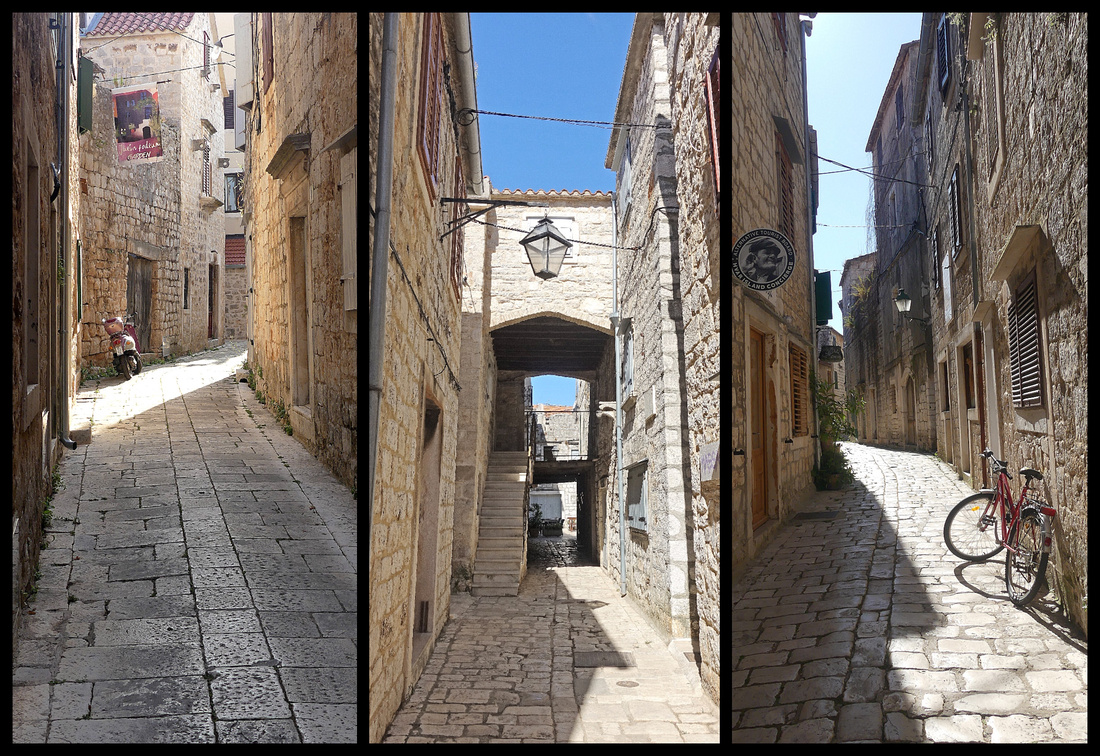

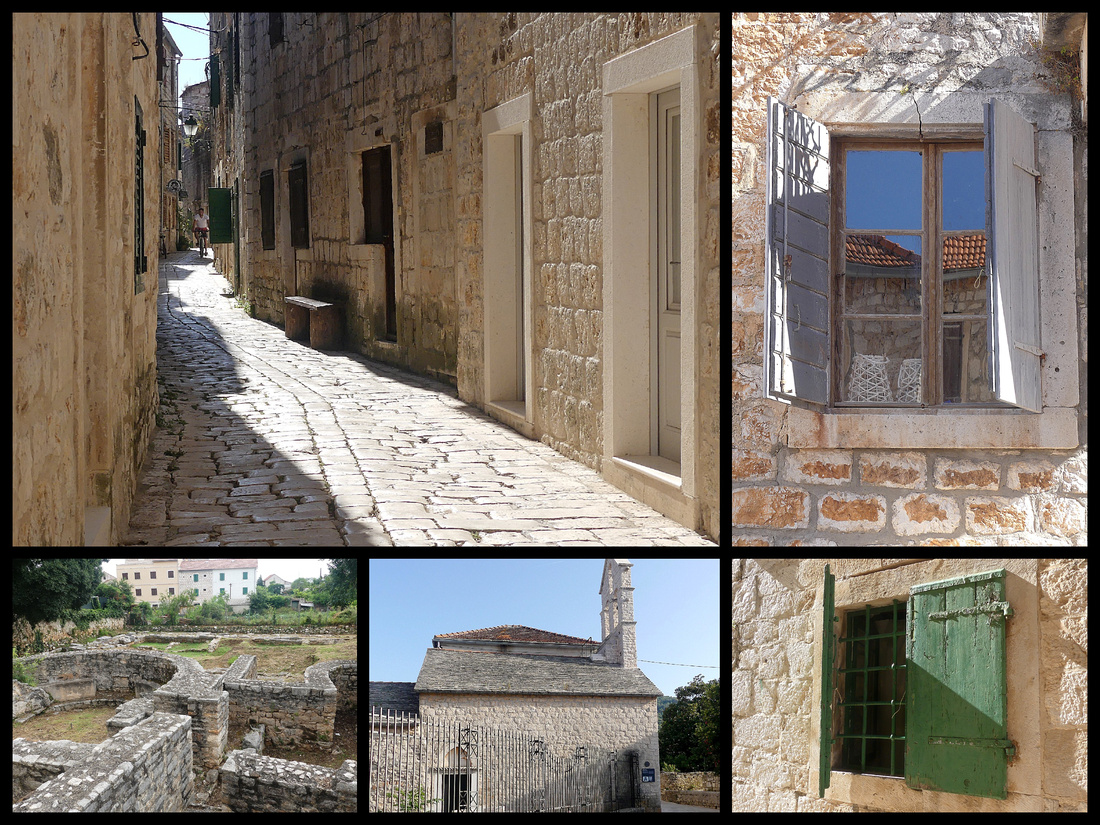

While there were plenty of sleek sailboats/yachts and a few that looked like ‘party’ boats, overall the atmosphere in Stari Grad is quiet. Plenty of families, people on beach holiday. No glitz or glamour at all.
Hvar Island is billed as a “lush, sunny Shangri-la, with more hours of sunshine (2,724) than any other place in Croatia.” So it makes sense that after 15 days of total sunshine all day every day, we get a cloudy day (with a bit of drizzle) in Hvar.
Most people know Hvar because of Hvar Town, (population 4,200) intensively (but tastefully) developed as a tourist resort. The island's capital is famed for it’s party vibe but it is also one of the Adriatic's best preserved historic towns. The center is totally pedestrianized and wraps around the harbor with stepped narrow streets, honey colored stone houses and a number of Venetian palaces and a small Renaissance cathedral (St Stephen) which stands on the largest square in Dalmatia. It’s bell tower is Venetian. Overlooking it all is the Fortress.


We climbed up to the fortress which is a really nice climb (about 20 minutes) through a “Mediterranean” Garden with lots of giant aloe and cactus to the fortress itself (50 kuna) which is very well preserved and the views really are wonderful- even on a cloudy day – offshore are the Pakleni islands and Vis is the distance. I especially loved the underground prison.
Fortiza (Spanjola) Construction of the current fortress began in 1282 shortly after the town turned to the Venetians for protection against the pirates rampaging through the Adriatic. The town financed the construction from the proceeds of selling salt. At one point in the 14th century, Spanish engineers participated in the project which is how the fort acquired its nickname, Spanjola. Largely intact stretches of defensive wall plunge down the hillside towards the town below. Its striking position perched on top of a 100m high hill makes it hard to miss, which of course was the point. Hvar was a lynch pin of the Venetian empire. Together with the town walls, Fortiza protected the town for centuries.
When Turks attacked the town in 1571, the entire population took shelter within the fort as the town was plundered and set on fire. Only eight years later however, a lightening bolt struck the fort igniting a store of gunpowder which blew up and caused substantial damage to the fort.
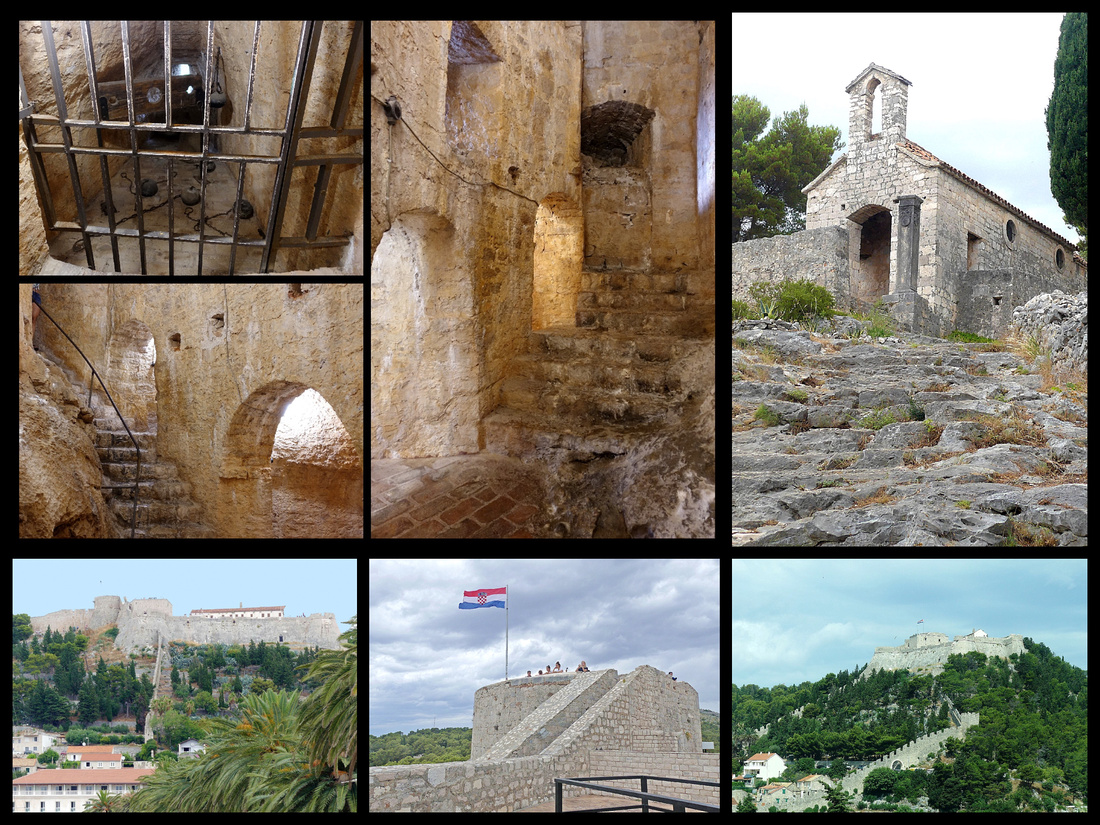

Hvar town is charming even in mid summer –I don’t know about evenings when it is party central, but mid day it’s a typical tourist town. Busier for sure than Stari Grad but it’s larger and has much more of tourist interest. I would say the percentage of “childless 20 and 30 somethings” is about 70% compared to Stari Grad (and other places in Croatia) where it’s more like 30% - the rest being people with kids and people over 40. But otherwise I didn’t see any more evidence of the RAF (rich and famous) than anywhere else. There were plenty of snazzy yachts in Stari Grad (and elsewhere) as well. The other main difference in Hvar Town from elsewhere was the prices. Jewelry store prices were 2-4 times higher for things that I’d been seeing elsewhere and not much of it was new or different. Prices for food near the harbor were double (pizza slice €4/30 kuna vs €2/15, ice cream scoop 16kuna vs 10 everywhere else in Croatia).
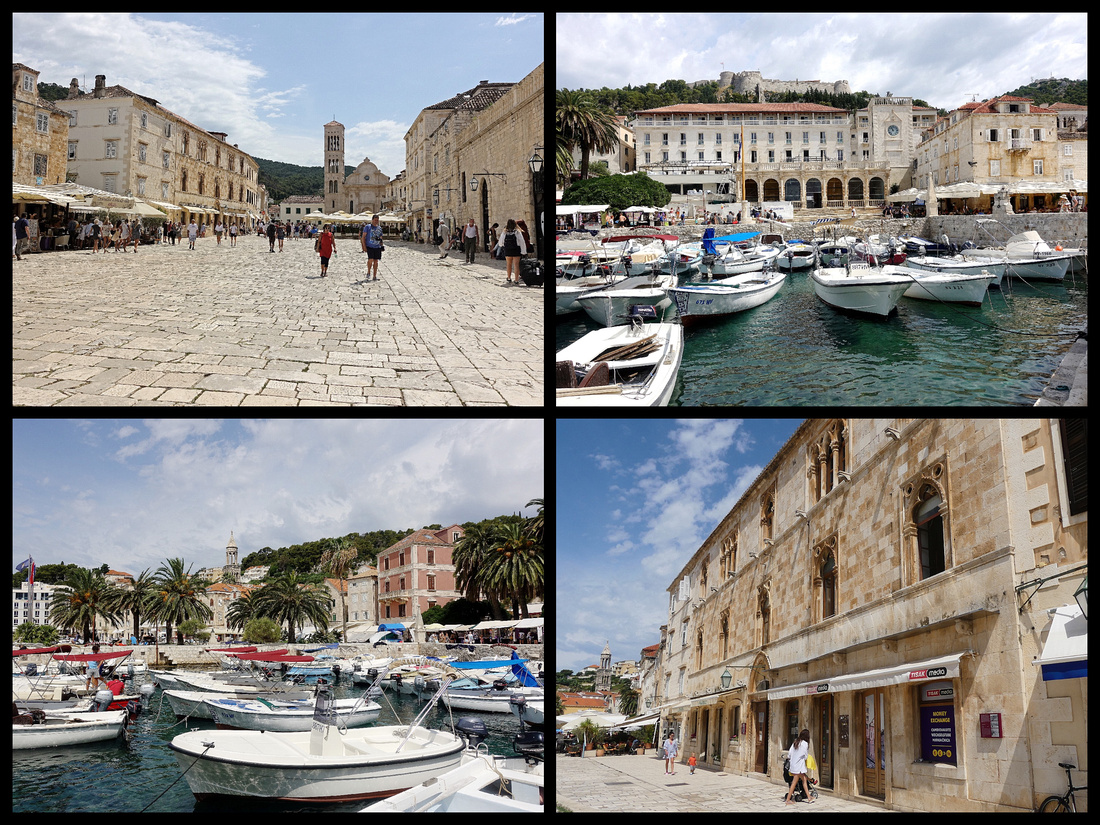

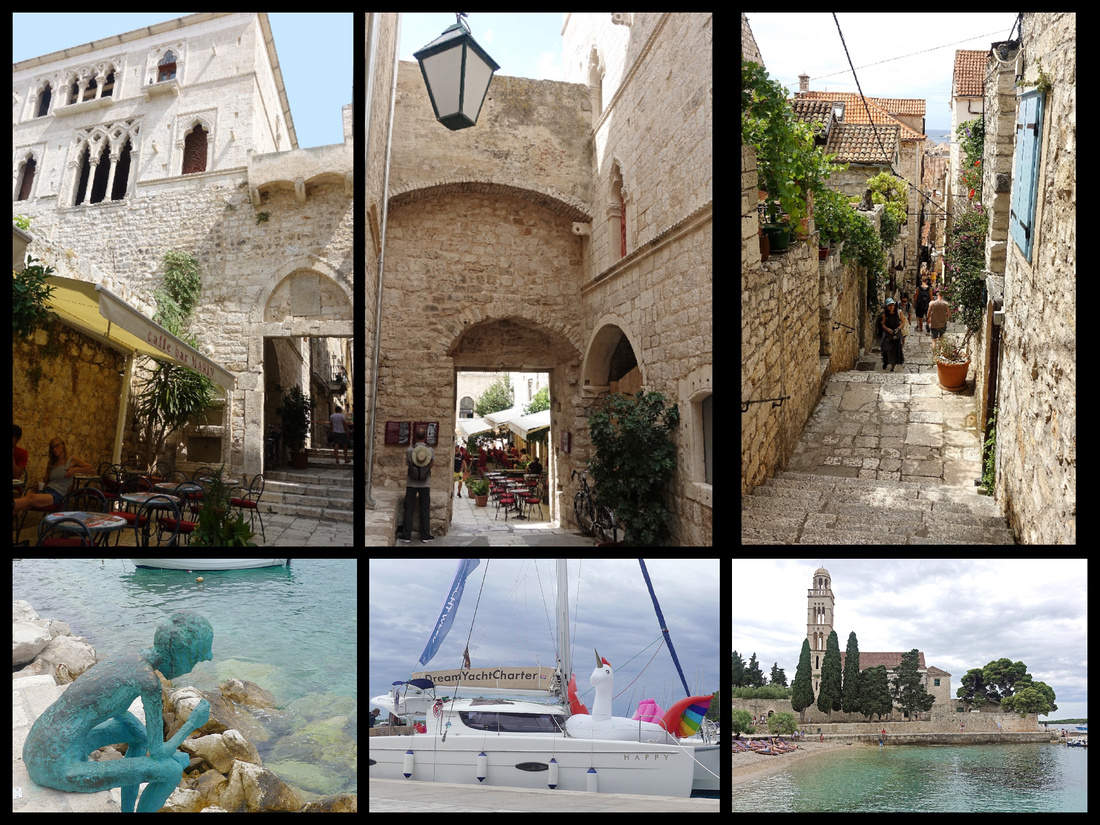

But Hvar Island is a UNESCO World Heritage site for the Stari Grad Plain – “a cultural landscape that has remained practically intact since it was first colonized by Ionian Greeks from Paros in the 4th century BC. The original agricultural activity of this fertile plain, mainly centering on grapes and olives, has been maintained. The landscape features ancient stone walls and small stone shelters, and bears testimony to the ancient geometrical system of land division used by the ancient Greeks, the chora which has remained virtually intact over 24 centuries.”
We took the bus from Stari Grad which takes between 20 and 40 minutes depending on the number of stops it makes. It goes through the beautiful Stari Grad Plain and along the coast. Slightly lusher than most Greek islands but otherwise very similar – grapes, olives, lots of stone walls.
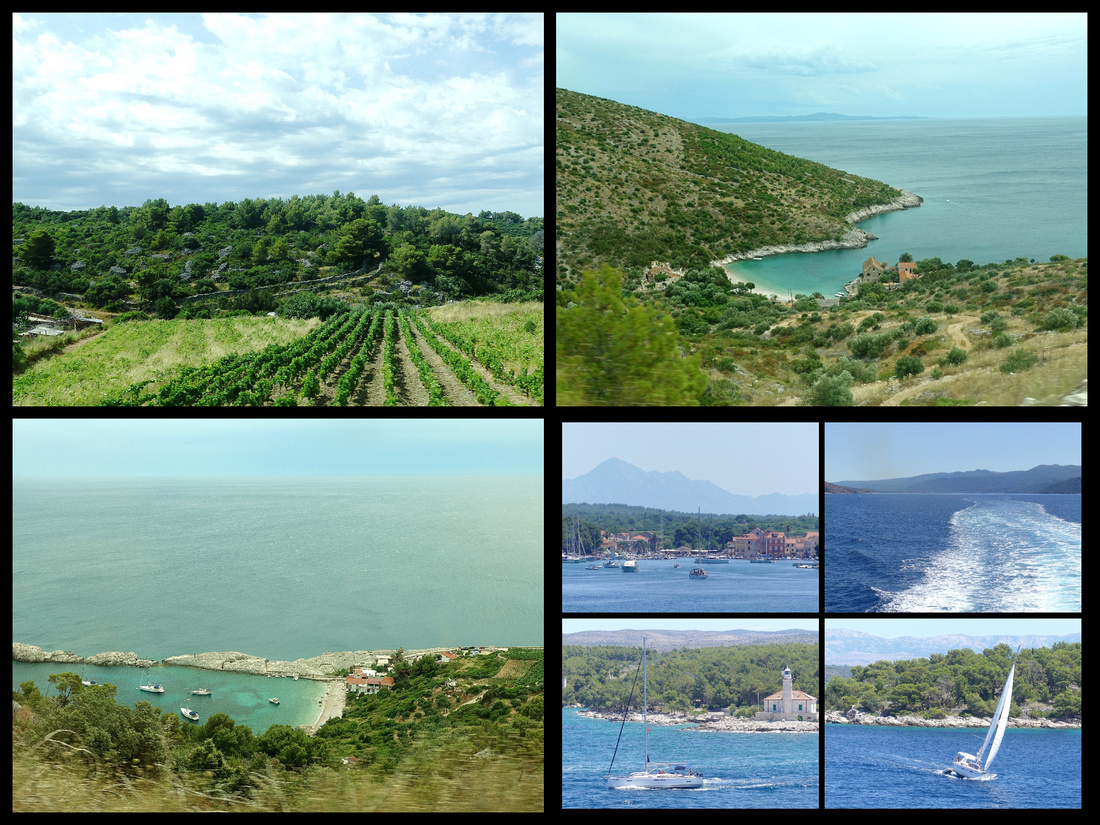

BRAC ISLAND - SUPETAR & PUCISCA
One of our days in Split we did a day trip to the island of Brac, the the longest and also the closest of the central Dalmatia islands to the mainland, only about a 45 minute ferry ride (a 'ferry' as opposed to a catamaran, so choice of inside or outside seating). Despite it's proximity to Split it is less touristed than Hvar or Kocula. The ferry puts into the town of Supetar but the place I really wanted to visit was the town of Pucisca, listed on several "most beautiful villages in Europe" lists. It's a half hour bus ride between the towns but the scenery is lovely, passing through vineyards, olive groves and along turquoise blue inlets with good views of the mountains on the mainland not that far away across the water. Alot of zigging and zagging but the bus trip was worth it.
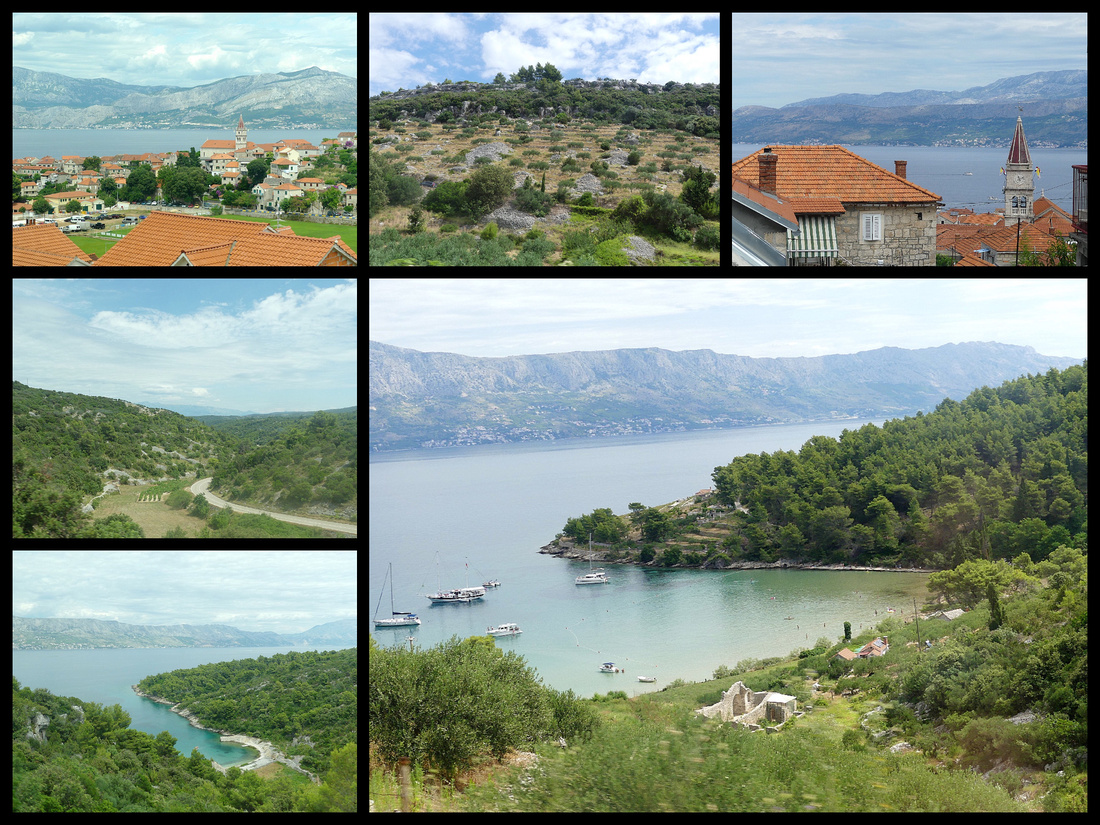

PUCISCA - population 1706, really is an adorable village with an lovely harbor. It's long and narrow with a couple of offshoots, the water is an amazing turquoise color and the town's buildings climbing up a gentle hill on both sides. There isn't a lot to the town, just a couple of restaurants, one church and a few lanes of stone houses, but somehow it all comes together to form a really picturesque place.
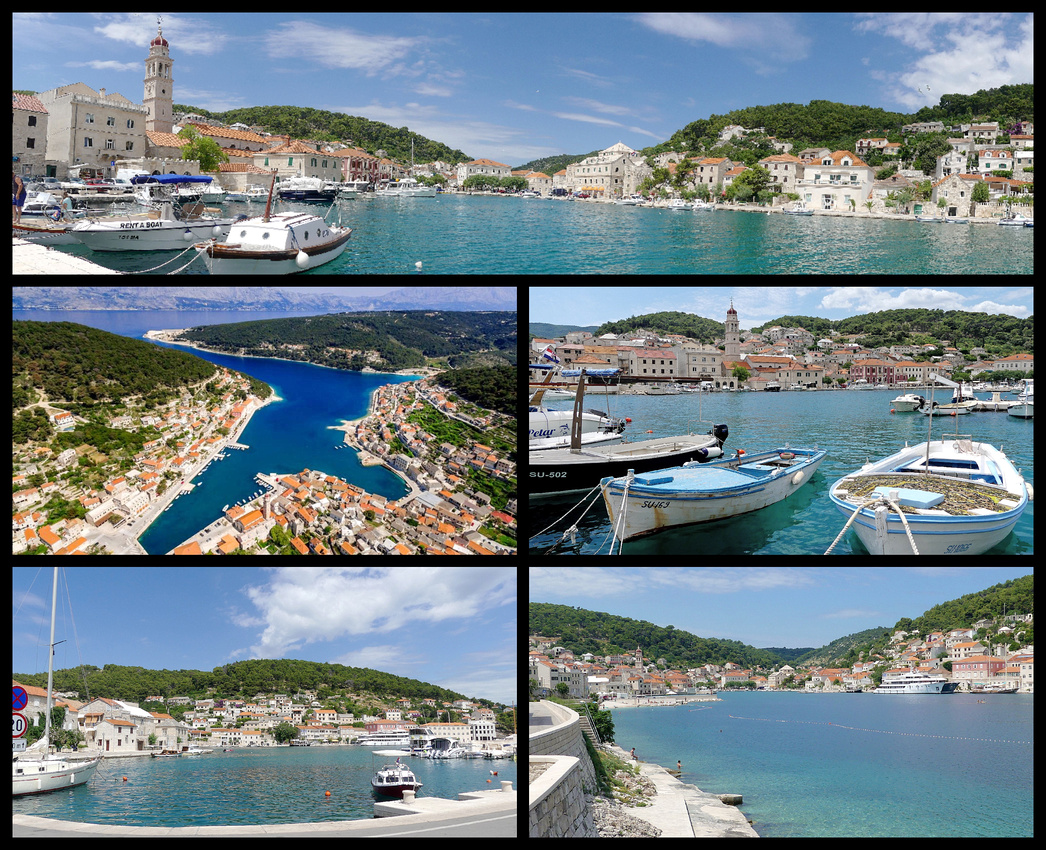



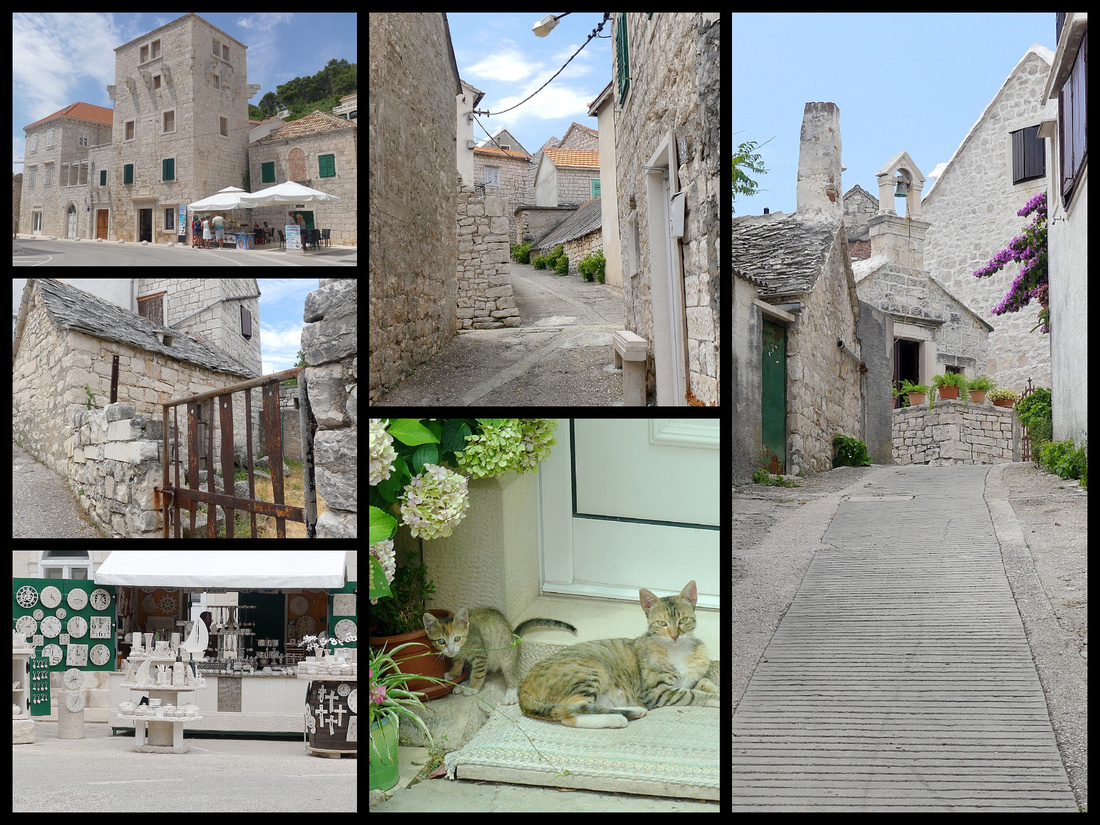

Brac Island is famous as the source of the white stone that built Diocletian's Palace and also the White House in Washington DC. The only 'tourist shops' we saw were selling items made of the very white Brac stone.
SUPETAR - with a population of 3500, is the largest town and main port of entry. It has a few medieval back streets with stone houses, a small pleasure boat harbor lined with a few restaurants and postcard shops and a beach. The baroque church of the Annunciation just off the harbor stands on the site of an early-Christian basilica, St Peter's, from which a mosaic and a number of old tombs were preserved. The basilica burned down and was rebuilt in 1604 and again in 1729.
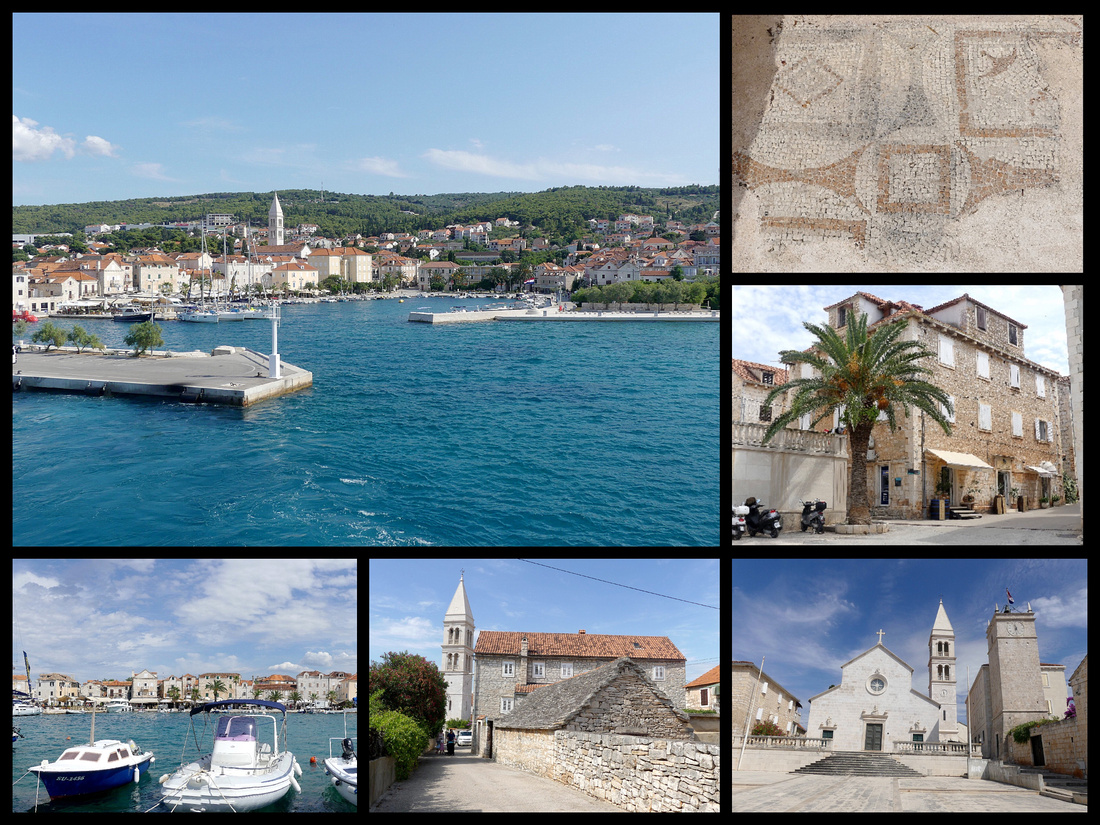



SPLIT
We spent three nights in Split, and despite being the only place on this trip that we had been on our last visit to Croatia, we found plenty to keep us busy, with only the one day trip to Brac. We stayed at the 'Dosoud Studios' booked on booking.com. At €126 night/double it tied with Venice as the most expensive place we stayed the entire five weeks. The 'Studios' consists of just three rooms, one on each floor of a lovely old building smack in the center of Diocletian Palace, just off Vocni Trg. Ensuite, and with a kitchenette, the room was comfortable enough though nothing special, but the view from the room was amazing. Unfortunately the 'beat/techno' music coming from the bar in the square below was pretty loud.
The largest Croatian city on the Adriatic coast (population 220,000), Split is a busy transportation hub, but it's old town, surrounding it's harbor is small enough to walk across in half an hour. All along the harbor is the Riva, a broad, lively pedestrian promenade with flowers, palm trees, benches and views out to the water on one side, and the buildings of the old town, including Diocletian's Palace, along the other side.
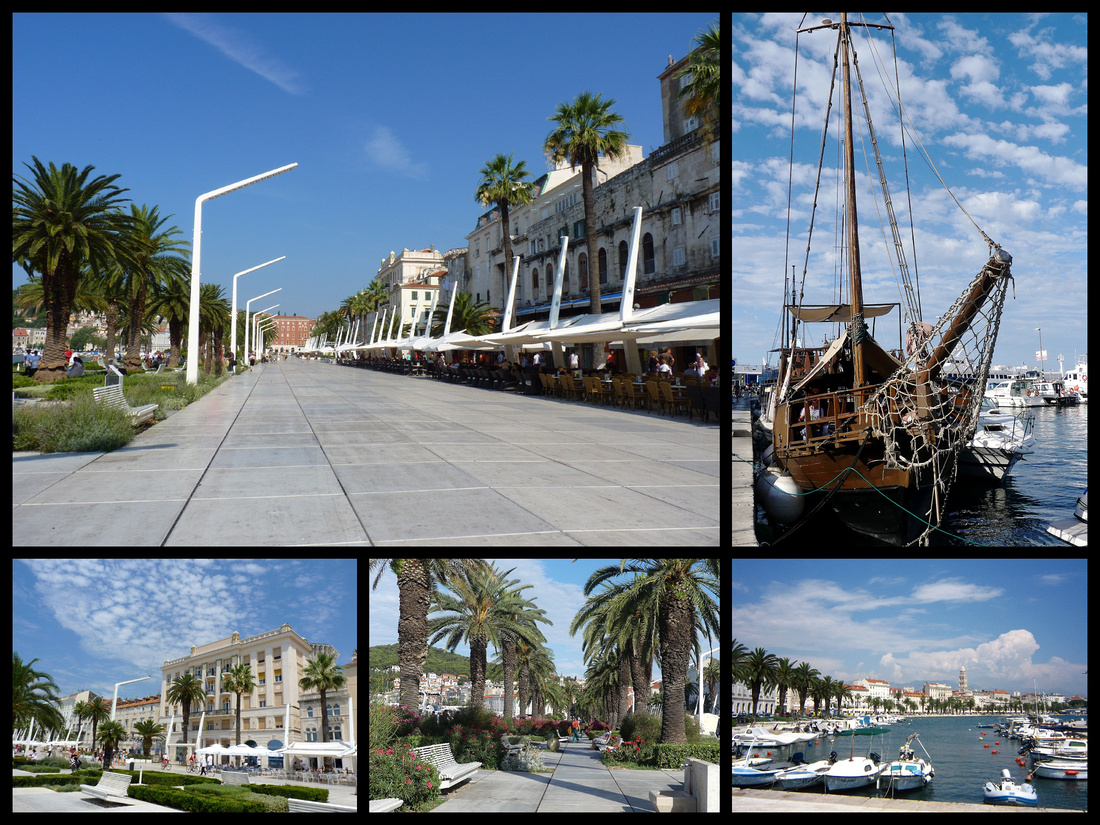

The center of the old town, and occupying a large portion of it, is Diocletian's Palace, a UNESCO World Heritage Site. Split has had many rulers over the centuries: Byzantine, Croatian, Franks, Venetians and Austrian-Hungarian, but it is most famous for the palace built by Roman emperor Diocletian (AD 245-313), known for his persecution of early Christians, as his retirement home in AD 300. The palace has been lived in almost continuously since then, gradually having been transformed into an entire city within the palace walls including houses, churches and municipal buildings. Despite being Roman and almost two thousand years old, it is not a ruin, having been built upon and inhabited continuously. Originally the complex would have housed a population of 8000 to 10,000 people. The ground plan of the palace is an irregular rectangle with towers projecting from the western, northern, and eastern facades. Only the southern facade, which rose out of the sea, was unfortified. In the center, a monumental court, called the Perystile, formed the northern access to the imperial apartments.
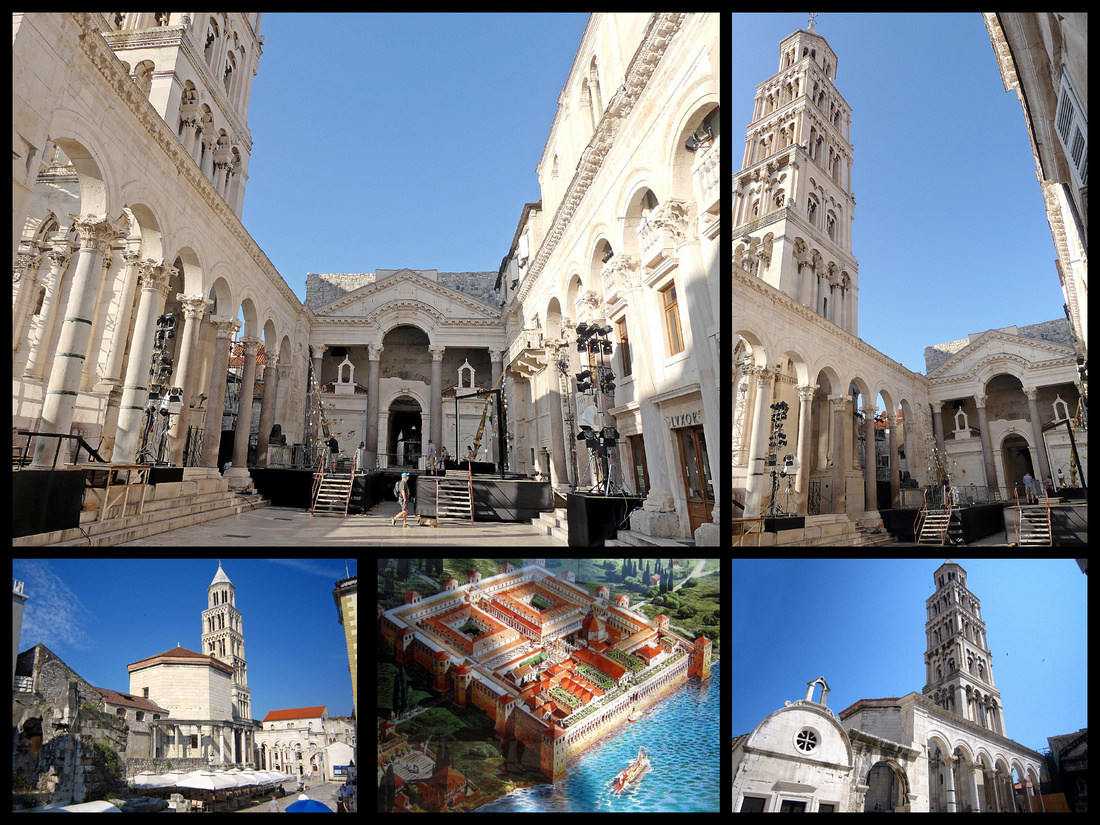

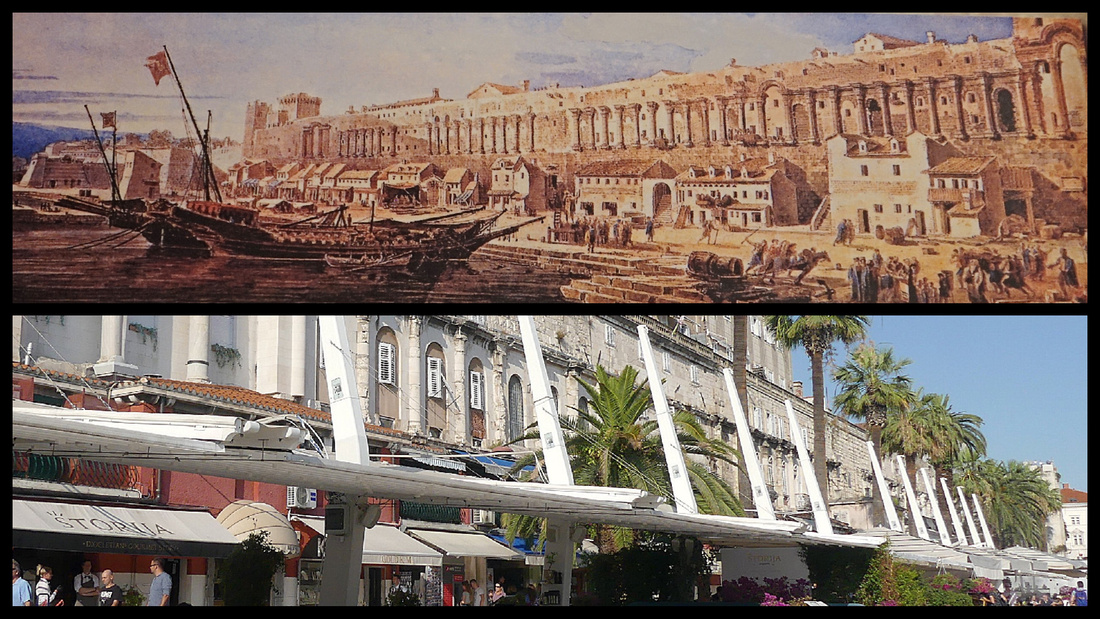

Above top photo - painting of what Diocletian's Palace and the waterfront looked like back in the day lower photo: the Riva today, you can just make out the columns of Diocletian's palace still embedded in the building
To one side of the Perystile is Cathedral of St Domnius (Katedrala svetog Dujma) entered through an arch guarded by two Romanesque lions with a collection of human figures riding on their backs. On the right looms the six-storey campanile, begun in the 13th Century but not finished until 1908, and featuring one of the ricketiest bell tower staircases in Europe. Inside, the dome is ringed by two levels of Corinthian columns dating from the 1st Century BC. The cathedral was originally built as Diocletian's tomb. Over the centuries, the building was converted into a Catholic church. Since the original building was built at the time when Christianity was still illegal, this is the oldest cathedral in the World. (And probably one of the smallest too.) This is also one of the rare cathedrals in the world that has portraits not of the saints - but of torturers of early Christians! The sphinx in front of the cathedral dates to 1500BC and is one of a pair brought from Egypt by Diocletian to stand guard over the mausoleum he built there for himself.
The small Crkvica Sv Roka (Chapel of St Rocco) beside the cathedral, 16th century, is used now as the tourist information office.
The center of the palace, and thus the center of Split's old town, is a maze of stone streets lined with houses and palaces. The 'best' is the Papalic Palce, now the City Museum, a typical example of the Gothic town houses built by Splits' 15th century aristocracy. A carved gateway leads from the street to a secluded, ivy covered courtyard entrance with a stone well.


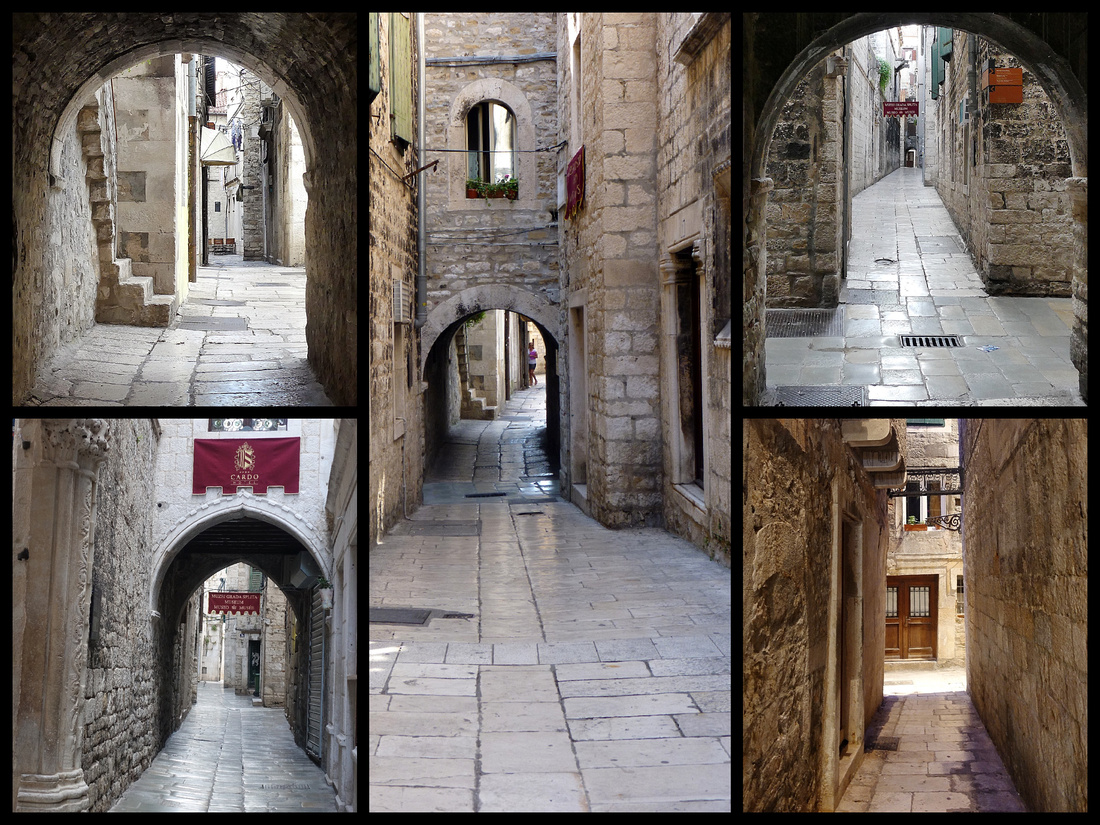

There are four 'gates' or entrances into the Palace. The unmarked and inconspicuous Bronze Gate is the southern entry from the Riva into Diocletian’s Palace basement. Before land was reclaimed for the Riva, the gate led directly to the Adriatic Sea. Once inside the basement, visitors can walk up the steep staircase directly into the Peristyle or enter the rest of the basement. While the current ground level of the palace looks like a medieval city, the basement level retains the Roman floor plan. This is the only part of the place which charges a fee to enter but is very well preserved and is the only part of the palace where you feel like you are in a Roman building.
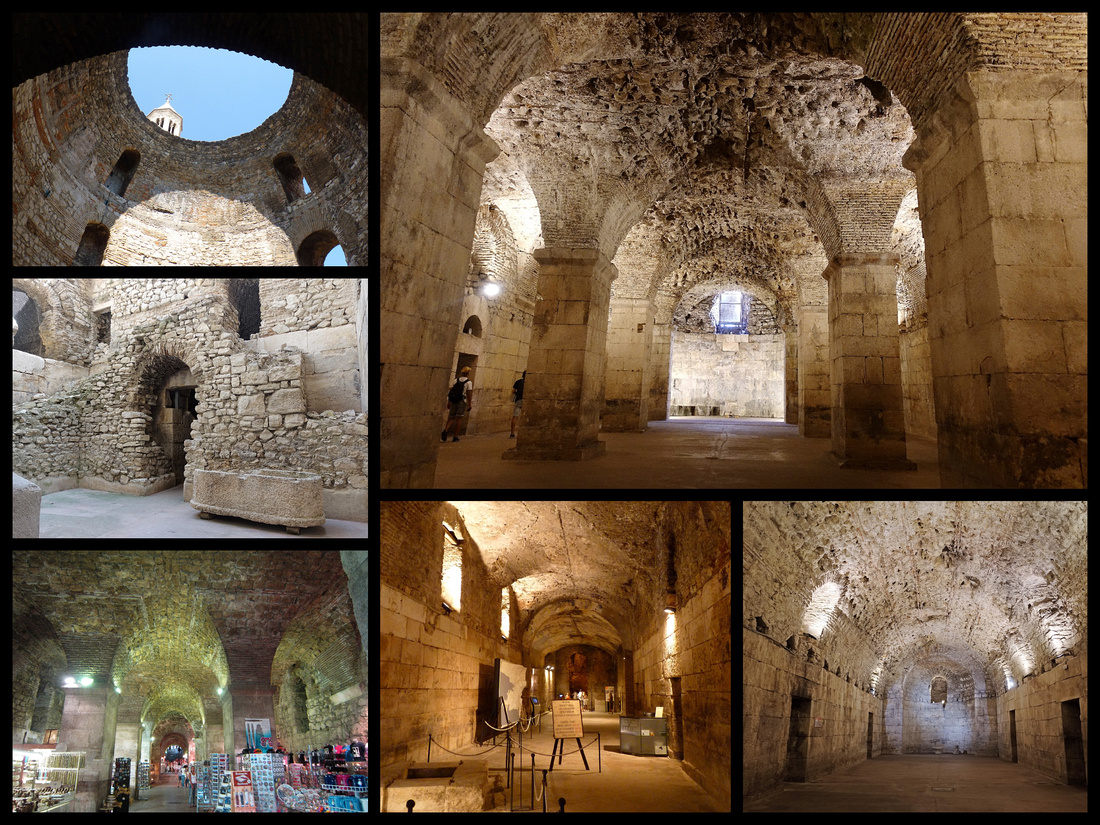

The eastern gate, known as the Silver Gate features a wall of arched windows. The gate has seen numerous modifications throughout history, as evidenced by the varying walls around it but attempts have been made to restore the Silver Gate as best as possible to its original construction. Outside the Silver Gate is Split's fruit and vegetable market.
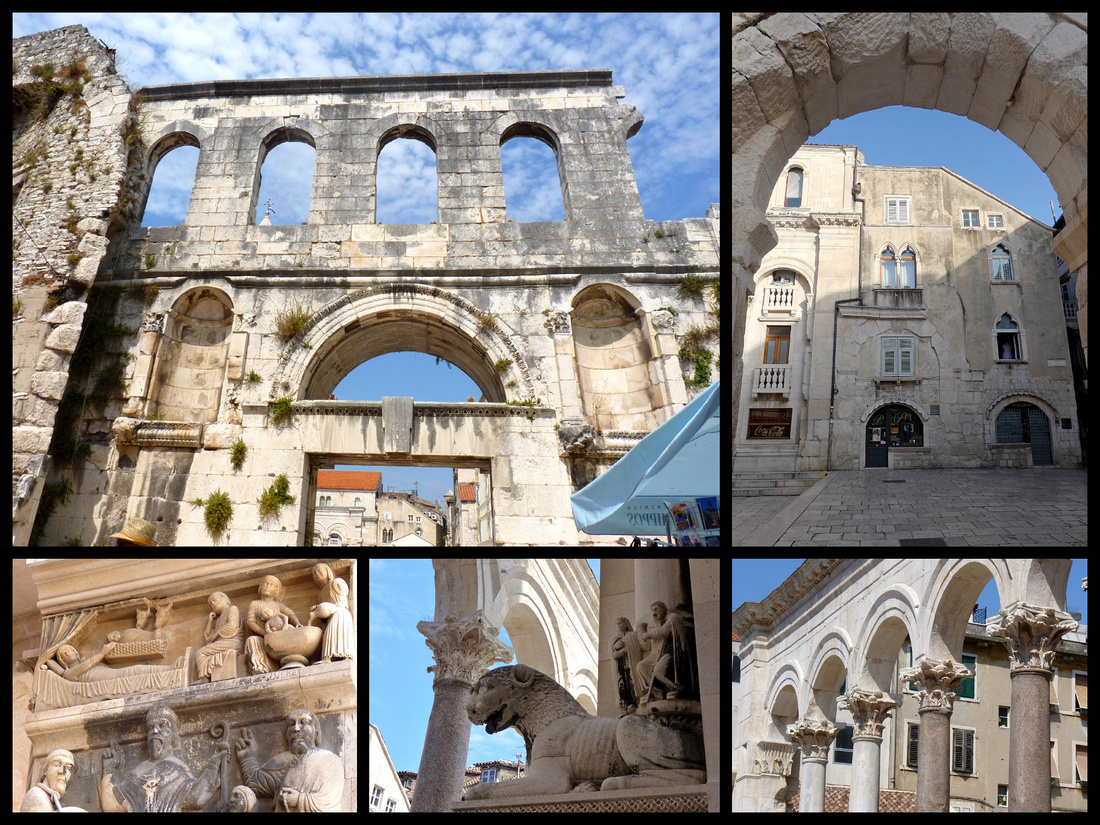

The Golden Gate (Zlatna Vrata) is on the north side and was the main landward entrances and is the best preserved. Outside the gate is the 28-foot-tall statue of the 10th-century Bishop of Nin. It’s said that rubbing his toe brings good luck!
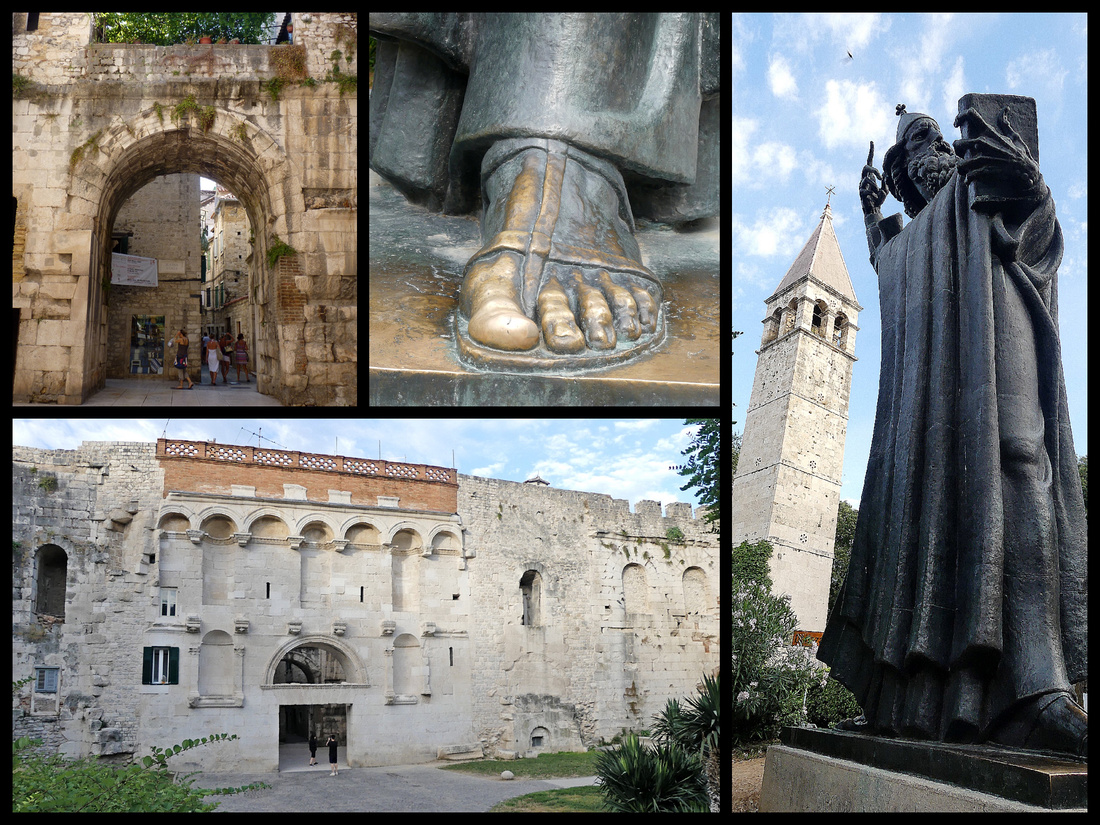
 The Iron Gate (Željezna vrata) on the western side leads to Narodni Trg/ Pjaca – aka People’s Square with a Romanesque house with a tower containing a 15th Century Renaissance clock with Roman numerals in 24 parts. Above the tower is a small Gothic belfry. This square replaced the Peristyle as the city's main square in the 14th Century, with the remains of a medieval sundial, behind which looms a taller, older belfry. One side of the square is dominated by the 15th Century Town Hall (Gradska vijećnica), with a ground-floor loggia of three large pointed arches supported by stumpy pillars.
The Iron Gate (Željezna vrata) on the western side leads to Narodni Trg/ Pjaca – aka People’s Square with a Romanesque house with a tower containing a 15th Century Renaissance clock with Roman numerals in 24 parts. Above the tower is a small Gothic belfry. This square replaced the Peristyle as the city's main square in the 14th Century, with the remains of a medieval sundial, behind which looms a taller, older belfry. One side of the square is dominated by the 15th Century Town Hall (Gradska vijećnica), with a ground-floor loggia of three large pointed arches supported by stumpy pillars.
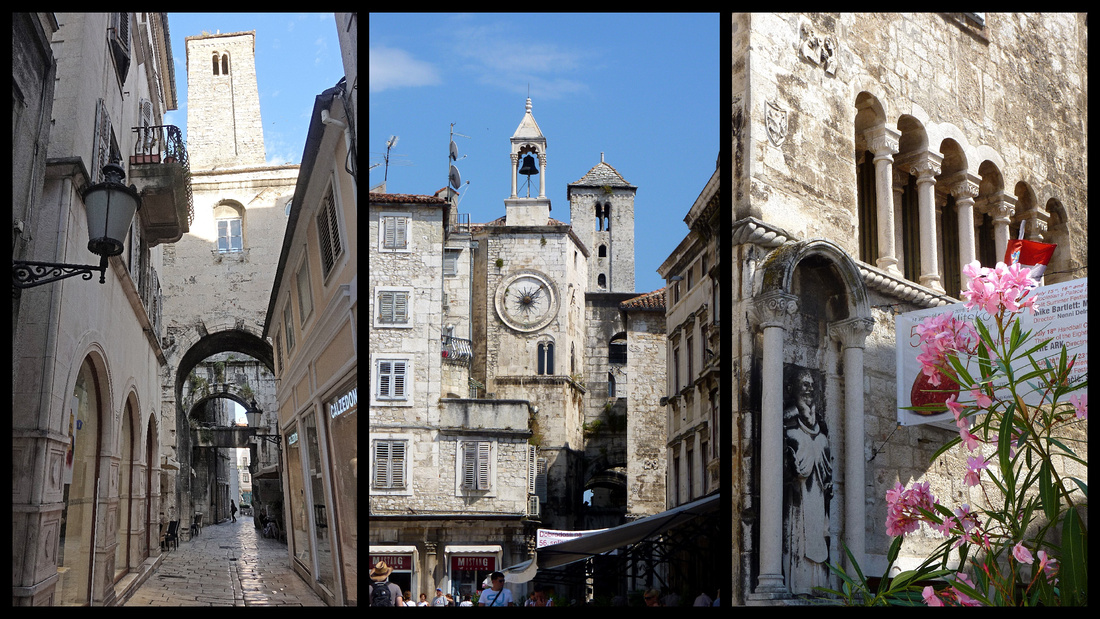

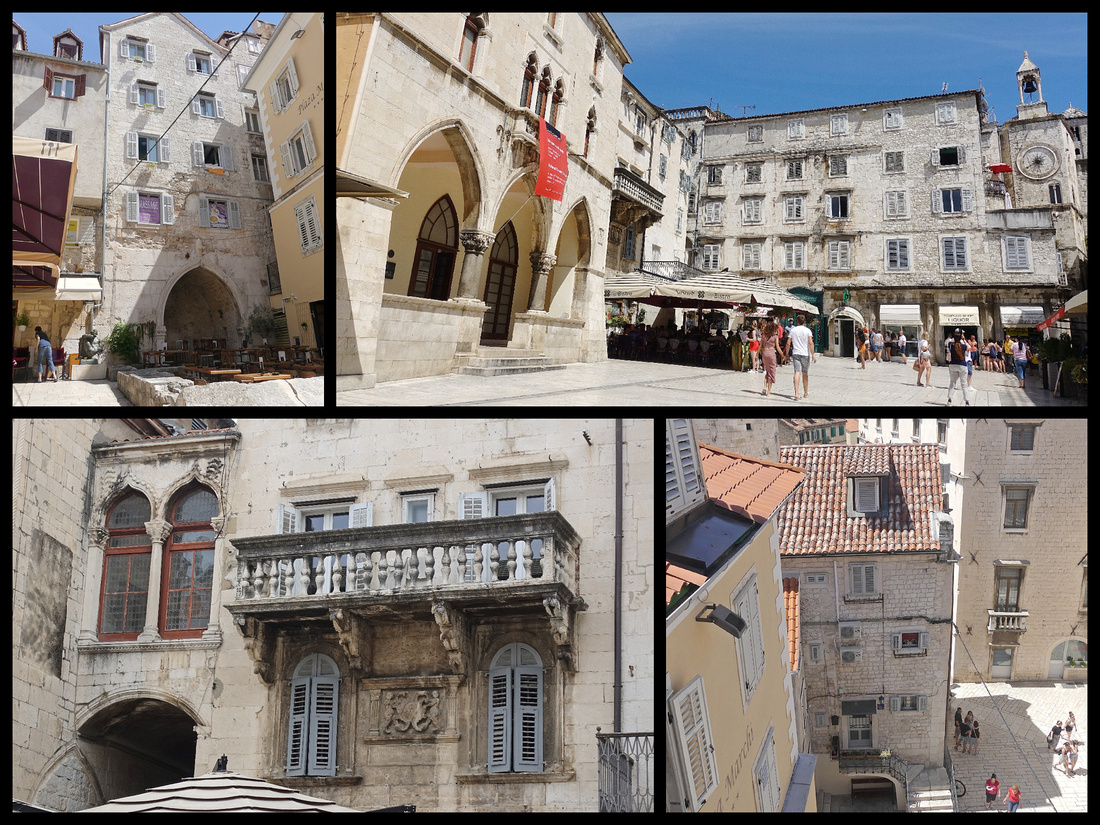
 Above top left: the building housing Dosud House Studios; top right: Narodni Trg lower left: Town Hall stone balcony lower right: view from our room
Above top left: the building housing Dosud House Studios; top right: Narodni Trg lower left: Town Hall stone balcony lower right: view from our room


Almost adjacent to Narodni Trg is Vocni trg (Fruit Square) (all three photos above). In the center is a large statue of Marko Marulic and on one side is an octagonal tower that once formed part of the 15th century Venetian castle, a passageway next to it leads out to the Riva. Dominating the square is the Milesi Palace, 18th century and one of the best examples of Baroque architecture on the Dalmatian coast.
The other major square is Trg Republic featuring the Prokurative (which means portico), forming three sides of the square - neo-Renaissance city council buildings incorporating some of the same architectural details as were used in Venice's St Mark's Square. This marks the far edge of Split's old town.


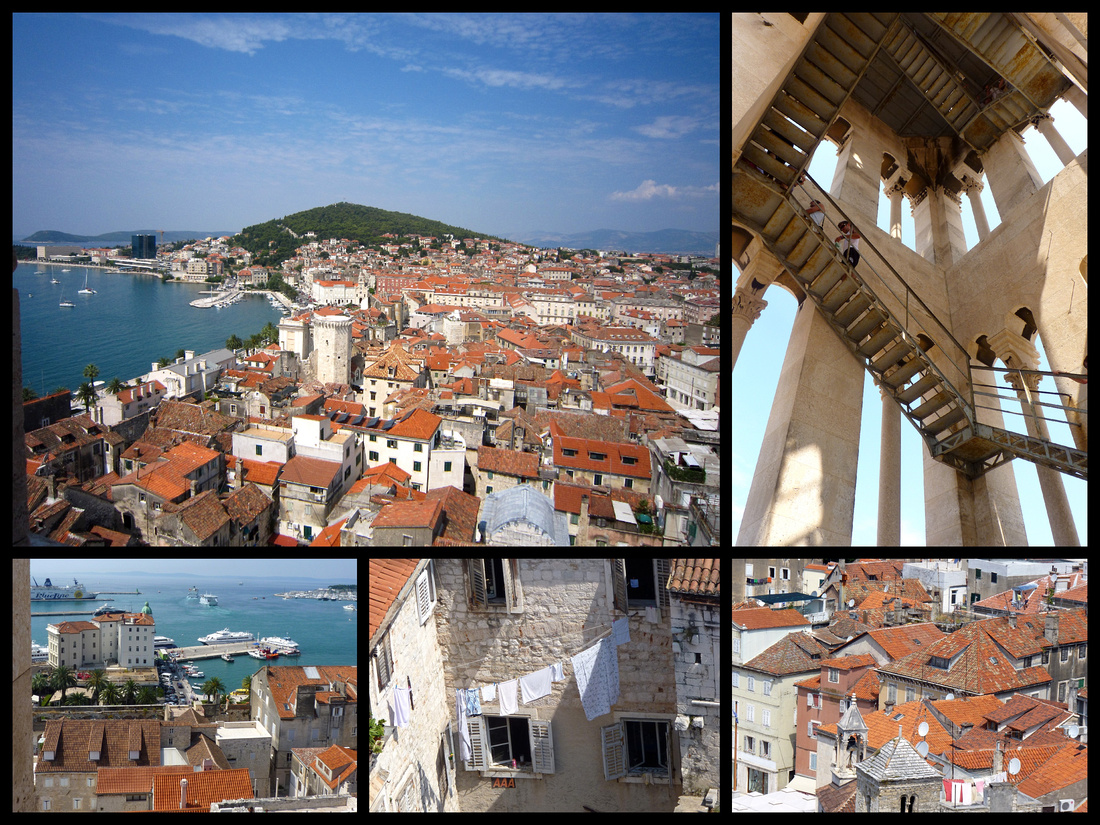

West of here is the 'modern' yacht harbor and the beginning of Marjan hill residential area.
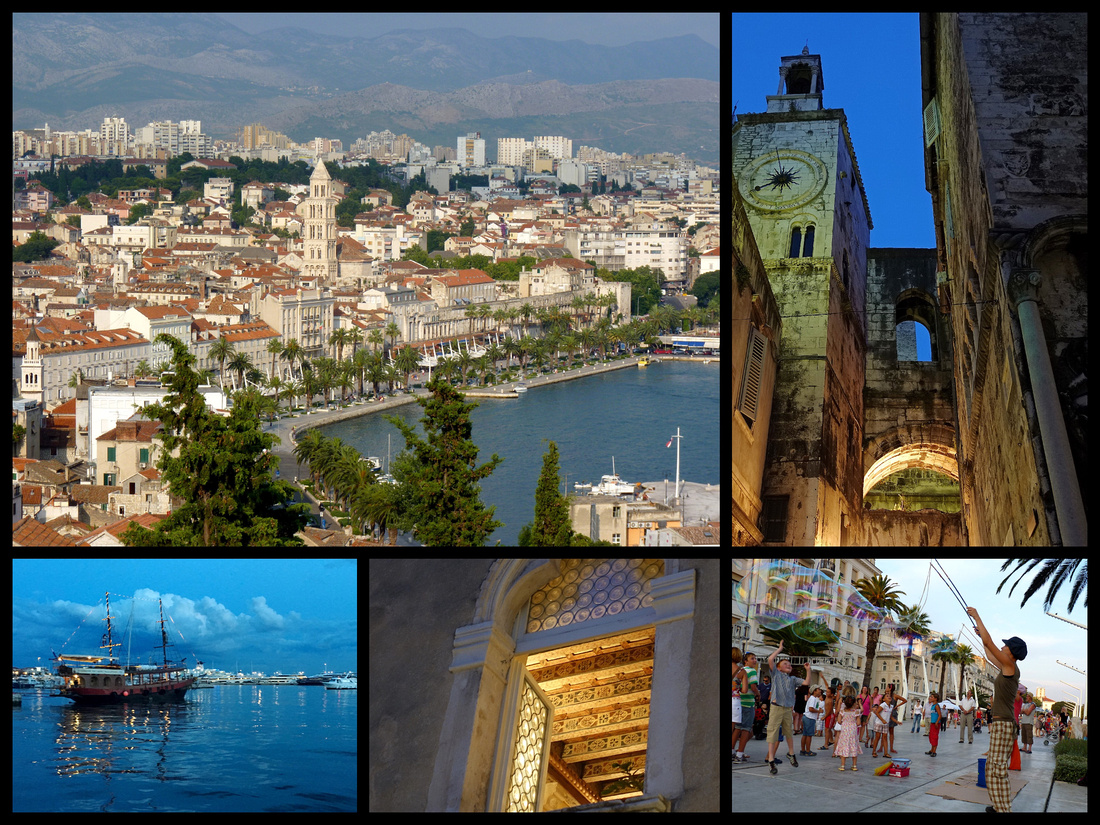

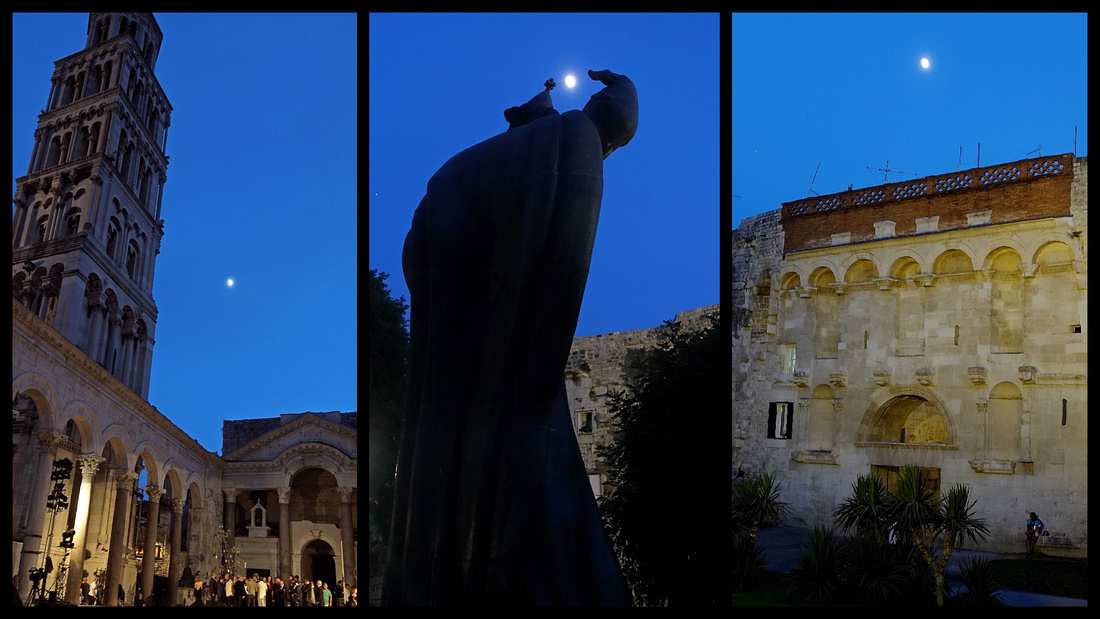

Overall I'm glad I chose to re-visit Spit. It has such an interesting history and Diocletian's palace and the setting on the Adriatic are wonderful. However, we noticed far more bars and discos - and tour groups - and glitzy chain stores -than the last time we were in Split - and way more than any other place we visited in Croatia this trip. It seems like Split is becoming like Hvar Town (or Ibiza) and catering to the clubbing scene, which is too bad as it's such an historic city. Drunk partiers don’t care about the location, they just want booze and beach and clubbing at night so they should just go to places with good beaches and leave historic towns alone. Despite that we enjoyed our time there and for any visitor to the central Dalmatian coast (or just even to Croatia) Split is definitely a 'must see'.